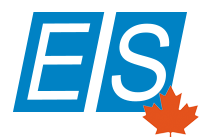Gas Flux Analyzers and Soil Imaging Systems
Gas flux analyzers and soil imaging systems are essential tools for environmental science, agronomy, and sustainable land management. These advanced instruments enable researchers to quantify gas exchanges (such as CO₂) between soil and atmosphere, while visualizing the internal dynamics of the soil with exceptional accuracy.
Overview:
Designed for reliability and reproducibility, these systems combine dynamic chambers, non-dispersive infrared (NDIR) sensors, and intelligent control interfaces. They continuously monitor gas concentration variations in the chamber while measuring key environmental parameters such as air and soil temperature, barometric pressure, and humidity. Their compact and portable design makes them ideal for field campaigns and real-world environmental studies.
Main Advantages:
- High precision and repeatability using NDIR infrared technology.
- Easy-to-use interface for fast setup and operation in the field.
- Lightweight and robust design for effortless transportation.
- Low power consumption for extended outdoor operation.
- Real-time data acquisition and storage — no post-processing required.
Typical Applications:
Gas flux and soil imaging systems are used in a wide range of applications:
- Agronomic research: soil respiration monitoring, crop management optimization, and soil fertility assessment.
- Environmental sciences: soil carbon monitoring, greenhouse gas (GHG) quantification, and climate impact studies.
- Ecology and forestry: investigation of soil–plant interactions and ecosystem balance.
- Sustainable land management: carbon cycle modeling and spatial soil characterization.
ES Canada Expertise:
Through its Environmental and Industrial Instrumentation Division, ES Canada supports universities, research centers, and environmental organizations across Canada with advanced measurement technologies. Our team provides local technical support, in-depth expertise in soil gas and imaging systems, and long-term service reliability — ensuring that every project benefits from accurate data, operational efficiency, and durable performance.
There are 5 products.











